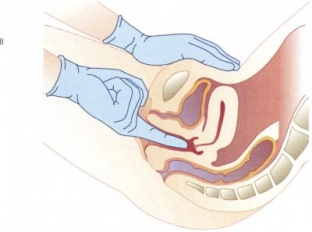Among the many modern diagnostic and therapeutic procedures that are used in obstetric and gynecological practice, the phrase "gynecological massage" sounds, to put it mildly, surprising. It would seem, what could be the use of a simple massage in such a delicate matter as gynecology. However, such thoughts are a serious misconception. Gynecological massage is one of the most simple, natural and effective procedures that help not only in the treatment, but also in the prevention of many gynecological diseases. Mastering the technique of gynecological massage is one of the most important skills of practicing gynecologists.
Features of the gynecological massage procedure
Gynecological massage was invented back in 1861, but obstetrician-gynecologists did not recognize this technique for a long time, since its inventor, Thure Brandt, was far from this branch of medicine. Since the organs of the female reproductive system consist mainly of connective and muscle tissue, gynecological massage is an actual technique that, if performed correctly, cannot harm. This procedure can be effectively used for non-surgical and absolutely harmless treatment of many gynecological pathologies, as it has an extremely positive effect.
Gynecological massage:
- for which diseases can gynecological massage be performed;
- major contraindications for gynecological massage;
- Gynecological massage technique.
What diseases can be treated with gynecological massage
In the modern world, a sedentary lifestyle is relevant for a huge number of women of reproductive age. Under such conditions, the blood flow in the pelvis worsens, leading to congestion and the development of pathological processes in the organs of the reproductive system. Gynecological massage helps to restore the tone of the muscles of the genital organs, eliminating the manifestations of many pathologies. The procedure is carried out for the following purposes:
- for the treatment of algomenorrhea;
- to eliminate and prevent the formation of adhesions in the pelvis;
- to increase sexual desire, treat anorgasmia and some other female sexual disorders;
- for the treatment of a tilted and displaced uterus;
- to improve the reproductive function of a woman.
The main contraindications for gynecological massage
Since gynecological massage involves manipulations directly on the uterus and its appendages, there are also contraindications to its implementation. It is not recommended to carry out the procedure of gynecological massage for pregnant women and nursing mothers. During menstruation, in the postoperative period and for several months after childbirth, it is also not recommended to massage the internal genital organs. Diseases such as cervical erosion, colitis, thrombophlebitis of the pelvic veins, inflammatory processes of the genital organs and gynecological oncopathology are also contraindications to performing gynecological massage.
Gynecological massage procedure procedure
 Gynecological massage procedure should only be performed by a doctor who has sufficient experience and competence in this matter. Massage is often performed on a gynecological chair. It is desirable that the patient first empty the intestines and bladder. By inserting the fingers of one hand into the vagina, as in a bimanual gynecological examination, the doctor brings the uterus and appendages to the anterior abdominal wall. With the fingers of the second hand, which is located directly on the wall of the abdomen, the doctor performs a gynecological massage. The procedure is carried out in several sessions for 3-5 minutes, with a gradual increase in the duration of the massage. On the days of the massage, the patient is not recommended to have sexual intercourse, and throughout the course she must be protected, as there is a risk of ectopic pregnancy. The number and duration of the course is determined by the doctor individually for each patient.
Gynecological massage procedure should only be performed by a doctor who has sufficient experience and competence in this matter. Massage is often performed on a gynecological chair. It is desirable that the patient first empty the intestines and bladder. By inserting the fingers of one hand into the vagina, as in a bimanual gynecological examination, the doctor brings the uterus and appendages to the anterior abdominal wall. With the fingers of the second hand, which is located directly on the wall of the abdomen, the doctor performs a gynecological massage. The procedure is carried out in several sessions for 3-5 minutes, with a gradual increase in the duration of the massage. On the days of the massage, the patient is not recommended to have sexual intercourse, and throughout the course she must be protected, as there is a risk of ectopic pregnancy. The number and duration of the course is determined by the doctor individually for each patient.






Add a comment